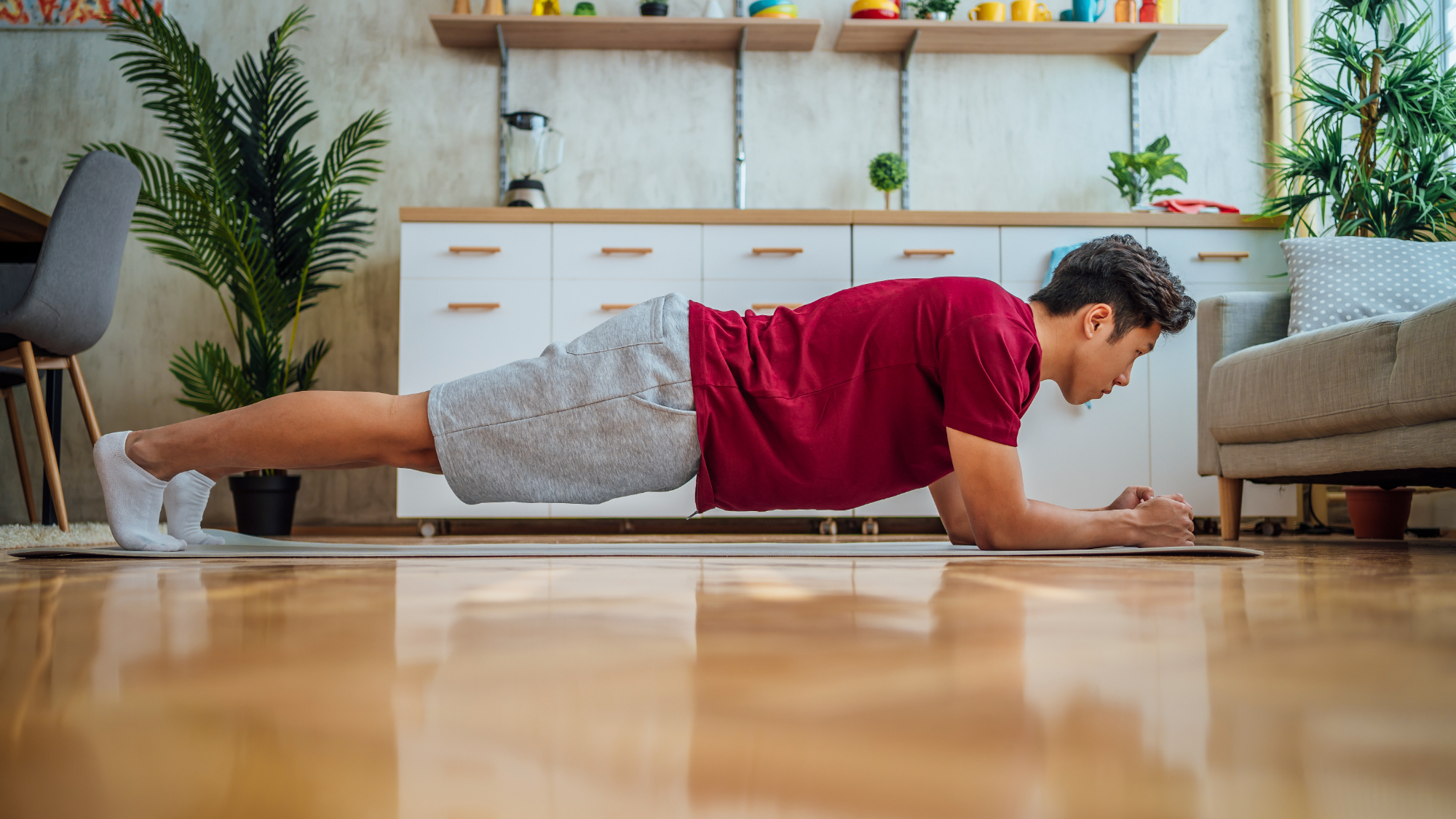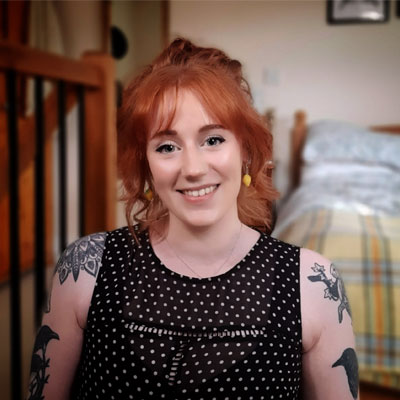The difference between abs and core training, according to personal trainers
Stuck between abs vs core training? We spoke to personal trainers to help you decide

Everyone has a core, but only some have visible abs — why is this, and is there any benefit to training one over the other? When considering abs vs core training, it's worth thinking about your goals; are you looking to build visible muscle, or are your goals more strength-based?
If you've been doing sit-ups and crunches but struggle to develop the famed six-pack muscle, that doesn't mean you don't have a strong core (a collection of muscles that connect your upper and lower body).
Strengthening your core helps with everyday tasks like lifting, sitting, and general movement, so conditioning the core is often a more worthwhile endeavor for overall health. However, a toned tummy is also desirable to a lot of us.
We spoke to several personal trainers to help you make sense of the abs vs core training debate so that you can choose the best for your body and goals. Then you'll know whether to invest in one of the best ab rollers or add some core strengthening exercises to your workouts.
Are your core and abs the same thing?
People often use core and abs interchangeably, but are they the same? We spoke to Carly Tierney, a personal trainer at Fitness First, to clear up the differences between your abs and core.
"Your abs (abdominal muscles) are made up of 4 layers of muscle, plus an external oblique on each side of your body, all of which have a different function, and they all work together to support your frame."
Carly Tierney is a qualified DW Fitness Clubs personal trainer, nutritionist, published fitness author, South Yorkshire Eating Disorders Association ambassador, and award-winning Bikini Fitness contestant.
"One layer is the "Rectus Abdominal Muscles," and these are the main ones visible in a six-pack when they are defined. They work to stabilize the spine and are vital for the movements of twisting to the side and bending forward and backward.
Start your week with achievable workout ideas, health tips and wellbeing advice in your inbox.
"These layers of abdominal muscles are just some of the muscles that make up what is known as the core. The core works to stabilize just about all of our movements.
"The layers of core muscles support our pelvis, hips, spine, hips, stomach, and more and help us to bend, jump, twist, and run. These core muscles include the abdominal muscles and the lower back, glutes, and pelvis."
Is it better to train your abs or your core?
If your abs form a part of your core, can you strengthen your core only using the best ab workouts, or do you need a more varied routine to get all the benefits of a stronger mid-section?
According to Tierney, "Learning to stabilize your body by engaging your core muscles and developing your core strength will help to strengthen your abs by encouraging the isolation of your abdominal muscles.
"If you struggle with back pain, poor posture, or bad balance, these are all signs that you have a weak core, and if you suffer from neck pain after training abs, this is a tell-tale sign that you are not properly engaging your core during your exercises.
"When you train your abs, this refers to your rectus abdominis and obliques. It is possible to have defined abs but still have a weak core, especially if you're neglecting the other muscles which make up the core. It is best to focus on full-body workouts which cover all the main muscle groups."
According to a study in the Journal of Physical Therapy Science, training your core muscles over four weeks improves seated core stability in some ways, indicating that there is value to core training even if only undertaken for a short period.
James Bickerstaff is a personal trainer at OriGym. He first got into fitness after deciding to take on the Couch to 5K running challenge on a whim. This sparked his passion for running, alongside his love for healthy cooking and writing.
"Through training your core, you'll essentially target a greater number of muscles at once. This action will benefit your sporting performance and everyday life, aiding with activities such as long-distance running and picking things up; you should therefore focus your efforts on the core," adds James Bickerstaff, a personal trainer at OriGym.
Lauren Thomas, a personal trainer at MuscleSquad, also suggests keeping an active core in every exercise you do. This way, "training your abs allows you to have a better-balanced core, so you are as strong through the anterior chain as you are through the posterior chain."
Lauren Thomas is a personal trainer for MuscleSquad and David Lloyd Club Milton Keynes. She also plays for the Buckingham Ladies indoor hockey team, who became National Indoor Hockey champions live on BBC TV.
Does building abs give you a strong core?
Not necessarily. While it may seem like someone with a six-pack would have a stronger core than someone who does not, many other factors are at play.
"Just because you have abs does not mean you have a strong core. It simply means that your body fat percentage is low enough to make muscle fibers visible beneath your subcutaneous fat," said Bickerstaff.
However, many ab workouts engage more of your core than just the surface-level abdominal muscles, particularly when stability is required to complete them. That's certainly the case when comparing ab rollers and crunches to work your core.
Crunches focus more on the visible mid-section stomach muscles, and ab rollers require more engagement from the core muscles responsible for balance to complete exercises successfully. However, you don't need core-specific moves to strengthen that area.
The Journal of Human Kinetics reports that compound exercises like squats can also be an effective training method. The study compared a plank with a weighted squat and found more of the core was activated during the squat, although the plank engaged the oblique muscles more.
What's the best way to train your core and abs?
Tierney says the best way to train your abs is to "concentrate on tightening your abdominal muscles through exercises like crunches and leg raises. But performing activities that build core strength is vital for building strong abs."
She adds that you can build core strength using "exercises like bicep curls or squats, [by focusing] on engaging your core to improve your form and encourage strengthening your abs. I like bodyweight exercises, like planks and twists, to practice engaging the core.
"It is the intensity and the diversity of exercises that the body best responds to, not doing the same movement repeatedly." She recommends working your abs for 20 minutes three times a week.
If core workouts aren't your thing, Hollie Grant, founder of PilatesPT, recommends Pilates to build a strong core. "Pilates is best as it is heavily based on core function. Training your core and abs needs to be functional (so not just lots of sit-ups)," she adds.
Hollie Grant is an award-winning STOTT Reformer and Mat Pilates Instructor, and personal trainer specializing in functional fitness, posture correction, and strength and conditioning.
To build practical, functional muscle, your workouts need to mimic the movements you'd do in daily life. Grant suggests Farmer's Carries to work both sides of your body as crunches repeat the exercise in a single direction.
Thomas agrees that you should take different approaches to train your abs and core. "Your core should be engaged and active in all of your training movements, especially those that bring emphasis to having a stable trunk like deadlifts, squats, and standing military presses."

Lou Mudge is a Health Writer at Future Plc, working across Fit&Well and Coach. She previously worked for Live Science, and regularly writes for Space.com and Pet's Radar. Based in Bath, UK, she has a passion for food, nutrition and health and is eager to demystify diet culture in order to make health and fitness accessible to everybody.
Multiple diagnoses in her early twenties sparked an interest in the gut-brain axis and the impact that diet and exercise can have on both physical and mental health. She was put on the FODMAP elimination diet during this time and learned to adapt recipes to fit these parameters, while retaining core flavors and textures, and now enjoys cooking for gut health.
